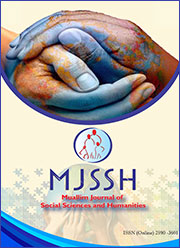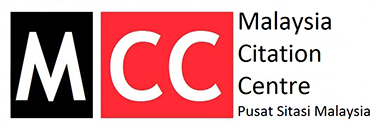Palatāramaṇam kuṟittu Muslim peṇ ceyaṟpāṭṭāḷarkaḷiṉ karuttunilai - Kiṇṇiyā piratēca nērvunilai paṟṟiya āyvu [The perception of women activists on polygamy: a case study in Kinniya region]
பலதாரமணம் குறித்து முஸ்லிம் பெண் செயற்பாட்டாளர்களின் கருத்துநிலை - கிண்ணியா பிரதேச நேர்வுநிலை பற்றிய ஆய்வு
Abstract
The marriage system polygamy has pervaded discourse among social activist and women’s movements. This study aims at examine effect of polygamy on the perception of the women activists in the region of Kinniya. This study used the analysis of data obtained from purpose sampled women activist through interviews. The review of the literatures contributed to construct the conceptual framework of the study. The findings reveal that the women activists have different perception on polygamy as system of marriage. Majority of them most likely consider its permission pertaining to emerging necessary situation. However, few women recommend this marriage system as it benefit the women at large. In comparison the majority of the women activists conceive it as inappropriate as it resulted in disadvantage to women in practice. Furthermore, those who are agreement with Islamic permission to the polygamy confined it with life style, and cultural pattern of the early period. They hold the high opinion of negative impact on women in Kinniya. This policy makers can refer the findings of this study to make recommendations and law amendment.
[திருமணம் முறைமைகளில் ஒன்றான பலதாரமணத்தின் பொருத்தம் குறித்த வாதமானது சமூக ஆர்வலர்கள் மத்தியிலும் பெண் உரிமைசார் அமைப்பினரிடையேயும் வாதப் பிரதிவாதங்களைத் தோற்றிவித்துள்ளது. இந்நிலையில் கிண்ணியாவிலுள்ள முஸ்லிம் பெண் செயற்பாட்டாளர்களுக்கு மத்தியில் பலதாரமணம் குறித்த கருத்து நிலையினை இவ்வாய்வு மதிப்பிடுகிறது. குறிக்கோள் மாதிரி முறையில் பெண் செயற்பாட்டாளர்களிடம் நேர்காணல்கள் நடத்தப்பட்டு குறியீட்டு முறையில் தரவுப் பகுப்பாய்வைப் பயன்படுத்தும் இந்த ஆய்வு இலக்கிய மீளாய்வுகள் மூலம் கோட்பாட்டு அமைப்பத்திட்டத்தை நிறுவியுள்ளது. கிண்ணியா வாழ் பெண் செயற்பாட்டாளர்களிடையே பலதாரமணம் குறித்த கருத்து நிலையில் ஒருமுகத்தன்மை இல்லை. அநேகர் இதனை அவசிய சூழ்நிலைகளில் அனுமதிக்கலாம் எனும் கருத்தும் அதேவேளை சிலர் இதனைப் பெண்ணுக்கு நன்மையானது எனக் கருதி ஏனயோருக்கு பரிந்துரைக்கும் நிலையிலும் உள்ளனர். ஒப்பீட்டளவில் பெரும்பான்மையானவர் பலதாரமணம் பெண்ணுக்கு ஏற்படுத்தும் பிரதிகூலங்களைக் கோடிட்டுக்காட்டி அதன் பொறுத்தபாடின்மையை பிரஸ்தாபிக்கின்றனர். இஸ்லாமிய பலதாரமண செயற்பாடுக்கு உடன்படுபவர்களாக உள்ள பெரும்பாலானவர்கள் அது கடந்தகால நிகழ்வுகள், பெண்களின் மனநிலை, மக்களின் வாழ்வியல், கலாசார நம்பிக்கை, பொருளாதார பற்றாக்குறை, சூழல் ஆகியவை பாற்பட்டதாக அமைந்தது என வாதிக்கின்றனர். கிண்ணியா பிரதேச பிரத்தியோக சூழல்நிலைகள் பலதாரமணம் பெண்ணுக்குப் பாதங்களையே ஏற்படுத்தவல்லது என்பது அவர்களின் வலுவான அப்பிராயமாகும். முஸ்லிம் பெண்கள் தொடர்பான சட்ட திருத்தங்களுக்கும் பெண்கள் நலன்சார் கொள்கைகளை உருவாக்கத்துக்கும் பெண் தொடர்பான ஆராய்ச்சிக்கும் இந்த ஆய்வு ஒரு வாசிப்பாக கொள்ளமுடியும்.]
Downloads
References
Philips, A.A.B. & Jones, M. (2005). Polygamy in Islam. Riyadh: International Islamic Publishing House.
Zaidi, T. (2016). Polygamy: In the Perspective of Islam. Social Sciences International Research Journal. 2 (1) P. 201-205
White, D.R. (1988). Rethinking polygamy: Co-wives, codes, and cultural systems. Current Anthropology.29 (4), 529-572.
Nate Olsen. (2009). marriage and divorce in Islamic and Mormon polygamy a legal comparison. Intermountain West Journal of Religious Studies 1 (1) p.90
Nihaya, D. (2013, May 30). Polygamy And Poor Mental Health Among Arab Bedouin Woman: Do Socioeconomic Position And Social Support Matter?. Journal of Ethnicity and Health. 19(4) P.385 - 405
Thobajane, T. D. & Flora, T. (2014, Dec 1). An Exploration Of Polygamous Marriages: A Worldview. Mediterranean Journal of Social Sciences. 5(2039-2117) P. 10-58.
Johnson, H. (2005). There are Worse Things Than Being Alone: Polygamy in Islam, Past, Present, an Future. William & Mary Journal of Women and the Law. 11 (3) P. 563-596.
Hatem, M., Haeri, Hessini, Weiss. (1995). Women and social reform. In J. L. Esposito (Ed.), The Oxford Encyclopedia of the Islamic World. Oxford: Oxford University Press.
Gpp. (2008). Challenging polygamy in a Muslim community of south east Asia. Journal of Adventist Mission Studies 4 (2) P. 36-43.
Amez, Monika. (2010). Empowering women through Islam: fatayat NU between tradition and challenge. Journal of Islamic studies. 21 (1) 66.doi:10.1093/jis/etp025 (41)
Moghissi, Haideh. (2002). Feminism and Islamic Fundamentalism. London: Zed books ltd.
Ahamed, Wasi. (2014). Criminalization of polygamy in Canada: historical, legal and sociological analysis. Osgoode legal studies research paper series 78 vol.10.17
Zainal, Fathima. (2019 oct 16) Okay with polygamy but not in their own marriage. the star online. Retrieved From https://www.thestar.com.my/new
Berkowitz. (2007). Gay men negotiating procreative father and family identities. Journal of marriage and family 69. 2
Rohman. (2013). Reinterpret Polygamy in Islam:A Case Study in Indonesia.Int J Hum & Soc Sci Inv,2(10),68-74.
Arif, Y. & Fatma, Y. (2018). Syrian Woman’s View of Polygamy. The Eurasia Proceedings of Educational & Social Sciences (EPESS) 10 P. 223-233
Nurmila, Nina. (2009). Women Islam and everyday life renegotiating polygamy in Indonesia. Londn: Routledge
Shepard L. D. (2013). The impact of polygamy on women's mental health: a systematic review. Epidemiology and psychiatric sciences, 22(1), 47–62. https://doi.org/10.1017/S2045796012000121
Al Krenawi, Graham. (2001). The cultural mediator bridging the gap between a non-western community and professional social work practice. British journal of social work 31 5 665-685
Özer A, Orhan FÖ, Ekerbiçer HÇ. (2013). Sociodemographic variables and depression in Turkish women from polygamous versus monogamous families. Health Care Women Int. 34(11):1024-34. doi: 10.1080/07399332.2012.692414.
Choolani. (2009). Ilangail Muslim kudumpa sattam (Muslim family law in Sri Lanka). Colombo: Muslim pegal Arachchi seyal Munnani.
Sreen, A. (2016). Muslim woman second class rights holders in sri lanka. Retrived from. https://srilankabrief.org/2016/12/muslim-women-second-class-rights-holders-in-sri-lankas-
Hasnah. (2015). Islamiya nokkil palnilai samaththuvam mattum samuha neethi: Muslim vivahe vivaharaththu sattamum Islamiya sattamum (Gender equality and equity: Muslim marriage and divorce act and Islamic law). Dehiwala: Ilangai apivirithikana oodahaviyalalar mantam.
Marsoof, Saleem. (2008). Ilangaiyin khadhi neethimantamum Muslim pengal meethana athan thakkamum (Quazi cort system in Sri Lanka and its impact on Muslim women). Colombo: Muslim pegal Arachchi seyal Munnani.
Census of Population. (2018). Kinniya Divisional Secretariat Report. Kinniya
Borgerhoff-Mulder, M. (1992). Women’s strategies in polygamous marriage: Kipsigis, Dotoga, and East African cases. Human Nature. 3 (1), 45-70
Gwanfogbe, P.N., Schumm, W.R., Smith, M., & Furrow, J.L. (1997). Polygamy and Marital Life Satisfaction: an Exploratory Study from Rural Cameroon. Journal of Comparative Family Studies. 28 (1), 55-71.
Alam, Sulthana M. (2010). A general understanding of polygamy among upsi communities: problems and prospects. Ozean Journal of Social Sciences. 3. 185-191.
Nurmila, Nina. (2016). Polygamous Marriages in Indonesia and Their Impacts on Women’s Access to Income and Property. Al-Jami'ah: Journal of Islamic Studies. 54. 427. 10.14421/ajis.2016.542.427-446.
Al-Krenawi, Alean. PhD, John Graham PhD & Abuelaish Izzeldin MD (2001) The Psychosocial Impact of Polygamous Marriages on Palestinian Women, Women & Health, 34:1, 1-16,
Chaleby, K. (1987). Women of polygamous marriages in outpatient psychiatric services in Kuwait. International Journal of Family Psychiatry. 8, 25-34.
Al-Krenawi, Alean & Graham, John & S, Ben-Shimol-Jakbson. (2006). Attitudes Toward and Reasons for Polygamy Differentiated by Gender and Age Among Bedouin-Arabs of the Negev. International Journal of Mental Health. 35. 46–61. 10.2753/IMH0020-
Hoodfar, H. (1997). The impact of male migration on domestic budgeting: Egyptian women striving for an Islamic budgeting pattern. Journal of Comparative Family Studies.28 (2), 74-98.
Mabaso, M.L.H., Malope, N.F. & Simbayi, L.C. (2018). Socio-demographic and behavioural profile of women in polygamous relationships in South Africa: a retrospective analysis of the 2002 population-based household survey data. BMC Women's Health 18, 133.

This work is licensed under a Creative Commons Attribution-NonCommercial 4.0 International License.











 This work is licensed under a
This work is licensed under a